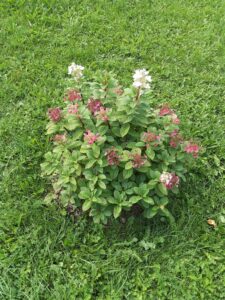 Learning how to breathe deeply is key to reducing anxiety and maintaining an even keel. Many people with anxiety/stress/worry breathe in their chest area, which can exacerbate anxiety and even bring on a panic attack. A good way to measure if one is taking a nice, deep abdominal breath is to rest one of your hands under your rib cage. Then as one inhales, your hand will raise up if you are taking a deep abdominal breath. Here are some steps to Cate’s method of deep breathing, which is a combination of different tried and true techniques:
Learning how to breathe deeply is key to reducing anxiety and maintaining an even keel. Many people with anxiety/stress/worry breathe in their chest area, which can exacerbate anxiety and even bring on a panic attack. A good way to measure if one is taking a nice, deep abdominal breath is to rest one of your hands under your rib cage. Then as one inhales, your hand will raise up if you are taking a deep abdominal breath. Here are some steps to Cate’s method of deep breathing, which is a combination of different tried and true techniques:
- Always both inhale and exhale through one’s nose. There is a nose-brain connection that increases the relaxation response.
- The exhale breath should be twice as slow as the inhale breath. This is key to a good relaxation response. As this way of breathing does not come naturally when one first starts this technique, sometimes it can be helpful to count, eg. a count of 3 inhale breaths to a count of 6 exhale breaths. If one is a particularly deep breather, you should try 2 inhale breaths to 4 exhale breaths. You don’t want to feel out-of-breath, just relaxed.
- When first starting to learn this technique, it is best to practice 8 rounds of the inhale/exhale breathing. Once you are more practiced, sometimes a round of 5 will be good enough.
- I encourage my clients who tend to be “worry warts” to practice this technique 3 times daily, prior to what are higher stress times of the day for them. Very often you will notice that your higher stress times of the day are “transition times,” eg. waking up, going to work/school, when family members come home, when you leave work, bedtime.
